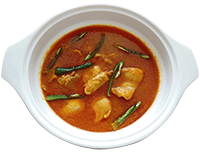

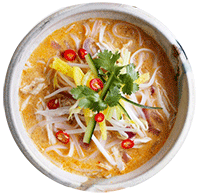

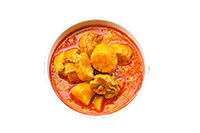
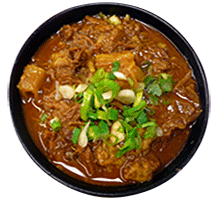
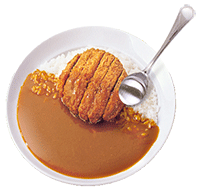
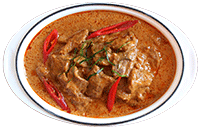










When you think of curries do you usually think of Indian curries?
There are more curries than you think!
Let us introduce you to the whole new world of Southeast Asian other Asian curries.

Burmese curries can be generalised into two types – the hot spicy dishes which exhibit north Indian or Pakistani influence, and the milder "sweet" curries. Burmese curries almost overwhelmingly lack coconut milk, setting them apart from most southeast Asian curries.
Regular ingredients include fresh onion, garlic and chili paste. Common spices include garam masala, dried chili powder, cumin powder, turmeric and ngapi, a fermented paste made from either fish or prawns. Burmese curries are quite oily, as the extra oil helps the food to last longer. A spaghetti equivalent called Nan gyi thohk exists, in which wheat or rice noodles are eaten with thick chicken curry.
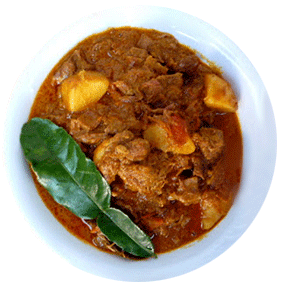
In Aceh and North Sumatra roti cane is often eaten with kari kambing. Other dishes such asgulai and opor are dishes based on curry. They are often highly localised and reflect the meat and vegetables available. They can therefore employ a variety of meats (chicken, beef, water buffalo and goat as in the flavoursome gulai kambing), seafood (prawn, crab, mussel, clam, squid, etc.), fish (tuna, mackerel, carp, pangasius, catfish), or vegetables (young jackfruit, common beans, cassava leaf) dishes in a spiced sauce. They use local ingredients such as chili peppers, kaffir lime leaves, lemongrass,galangal, Indonesian bay leaves (salam leaf), candlenuts, turmeric, turmeric leaves, asam gelugur and asam kandis (sourmangosteens similar to tamarind), shrimp paste (terasi), cumin, coriander seed and coconut milk. In Aceh, curries use daun salam koja or daun kari (Murraya koenigii) translated as "curry leaves".

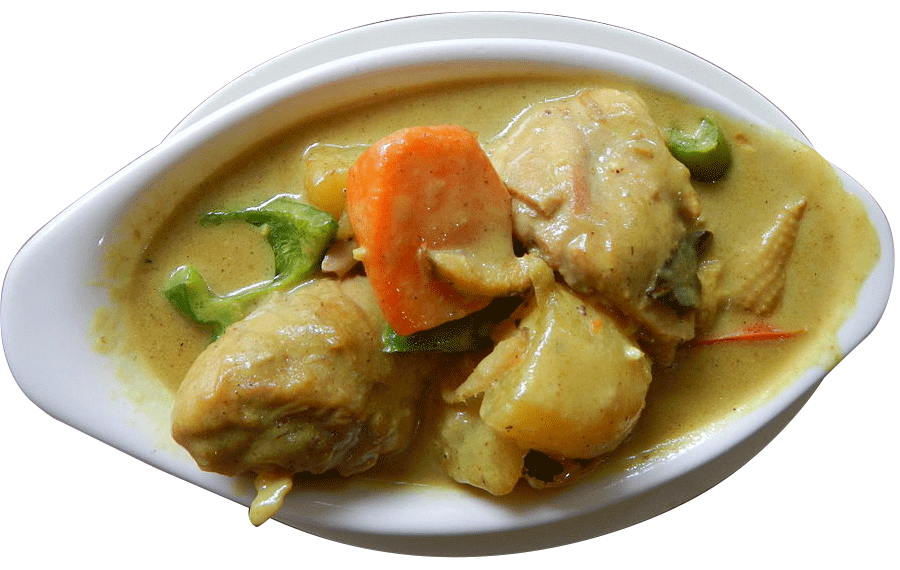
In the Philippines, two kinds of curry traditions are seen corresponding with the cultural divide between the Westernized north and Islamized south. Chicken cooked in coconut milk, chillies and curry powder is the usual curry dish that northern Filipinos are familiar with. A typical northern Filipino curry dish would be usually of either pork or chicken as the meat while cooked at a similar manner as to other local dishes such asadobo, kaldereta, and mechado, patis (fish sauce), with potatoes, bay leaf, coconut milk, and sometimes lemongrass and carrots to complement.
In southern areas of Mindanao, the Sulu Archipelago and southern Palawan, various curries are seen. These Mindanaoan curries include Kulma, synonymous with Korma, Tiyula Itum which is a beef curry blackened with burned coconut-meat powder, and Rendang, also eaten in Indonesia and Malaysia. Meats used in these curries include beef, lamb and chicken. Pork is not used in accordance with Islamic dietary laws.
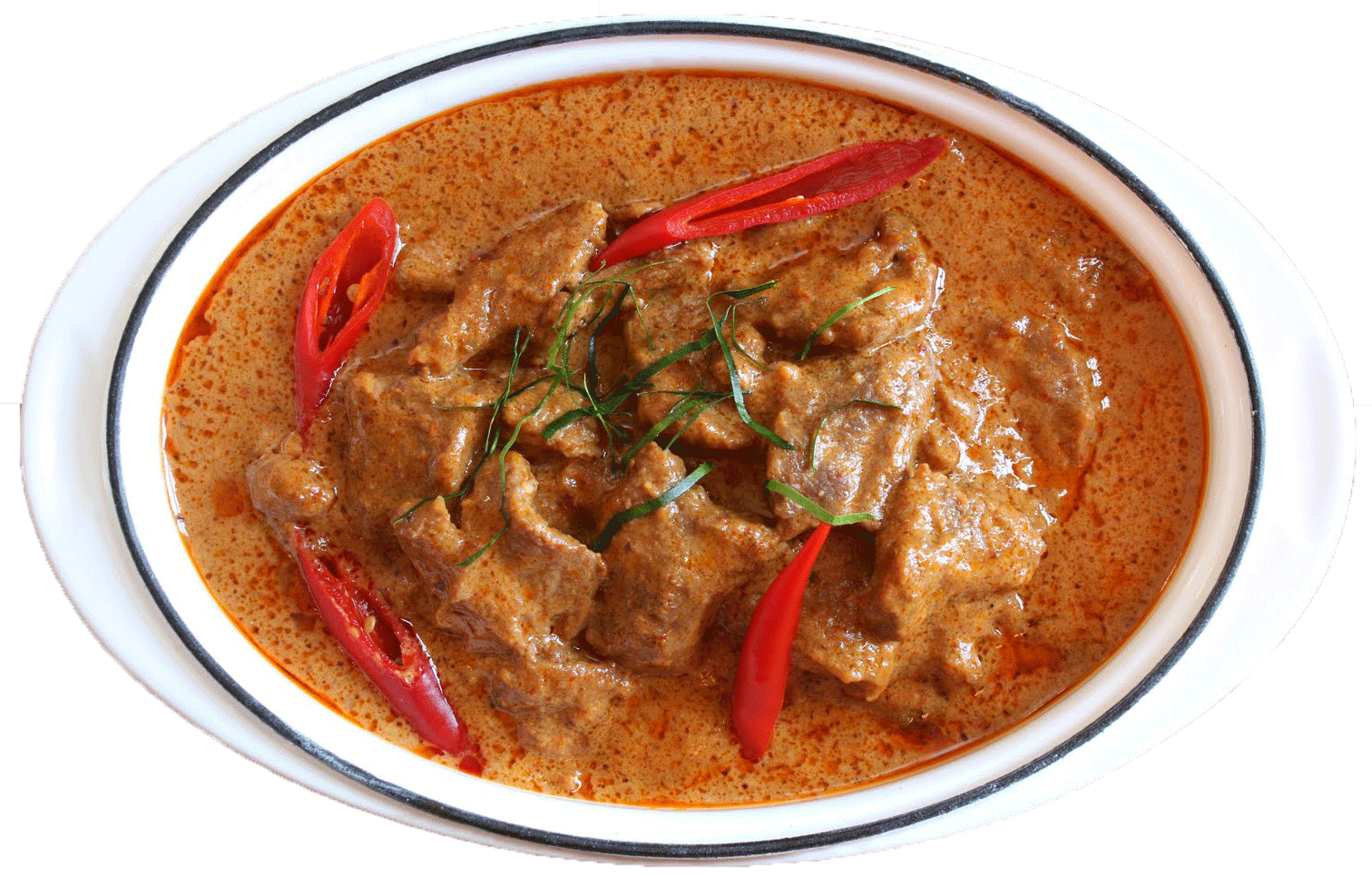
In Thai cuisine, curries are called kaeng, and usually consist of meat, fish and/or vegetables in a sauce based on a paste made from chilies, onions or shallots, garlic, and shrimp paste. Additional spices and herbs define the type of curry. Local ingredients, such as chili peppers, kaffir lime leaves, lemon grass, galangal and, in central and southern Thai cuisine, also coconut milk are used. Northern and northeastern Thai curries generally do not contain coconut milk. Due to the use of fresh herbs, spices, and other fresh ingredients, Thai curries tend to be more aromatic than Indian curries. In the West, some of the Thai curries are described by colour; red curries use red chilies while green curries use green chilies. Yellow curry - calledKaeng kari (by various spellings)
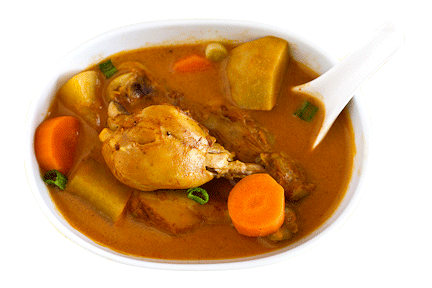
In Vietnam, curry is called cà ri. Vietnamese curry features coconut milk, potato, sweet potato, taro roots, chicken garnished with cilantro and green onion and is more soup-like than Indian curry. Goat curry also exists but only at a few specialized restaurants. The curry is usually eaten with a baguette, rice vermicelli or steamed rice.
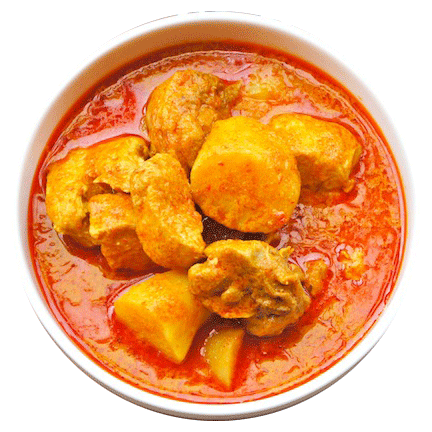
Chinese curries (咖哩, kā lǐ) typically consist of chicken, beef, fish, lamb, or other meats, green peppers, onions, large chunks of potatoes, and a variety of other ingredients and spices in a mildly spicy yellow curry sauce, and topped over steamed rice. White pepper, soy sauce, hot sauce, and/or hot chili oil may be applied to the sauce to enhance the flavour of the curry. The most common Chinese variety of curry sauce is usually sold in powder form. It seems to have descended from a Singaporean and Malaysian variety, countries which also introduced the satay sauce to the Chinese.
There are many different varieties of Chinese curry, depending on each restaurant. Unlike other Asian curries, which usually have a thicker consistency, Chinese curry is often watery "Galimian," (from Malaysian "curry mee" or "curry noodles,") is also a popular Chinese curry dish.

In Hong Kong, curry fish balls is a kind of street snack and curry brisket is a typical main course in cha chaan teng and fast food restaurants.

Japanese curry (カレー karē?) is one of the most popular dishes in Japan, where people eat it an average of 78 times a year. It is usually eaten as karē raisu — curry, rice and often pickled vegetables, served on the same plate and eaten with a spoon, a common lunchtime canteen dish. It is less spicy and seasoned than Indian and Southeast Asian curries, being more of a thick Japanese stew than a curry.
The standard Japanese curry contains onions, carrots, potatoes, and sometimes celery, and a meat that is cooked in a large pot. Sometimes grated apples or honey are added for additional sweetness and other vegetables are sometimes used instead. For the meat, pork, beef and chicken are the most popular, in order of decreasing popularity. In northern and eastern Japan including Tokyo, pork is the most popular meat for curry. Beef is more common in western Japan, including Osaka, and inOkinawa chicken is favoured.[28] Curry seasoning is commonly sold in the form of a condensed brick which dissolves in the mixture of meat and vegetables. Sometimes the curry-rice is topped with breaded pork cutlet (tonkatsu); this is called "Katsu-curry". Korokke (potato croquettes) are also a common topping.
Apart from with rice, curry is also served over noodles, possibly even on top of broth in addition, in dishes such as curry udon and curry ramen. It is also used as the filling in a fried curry bread pastry.